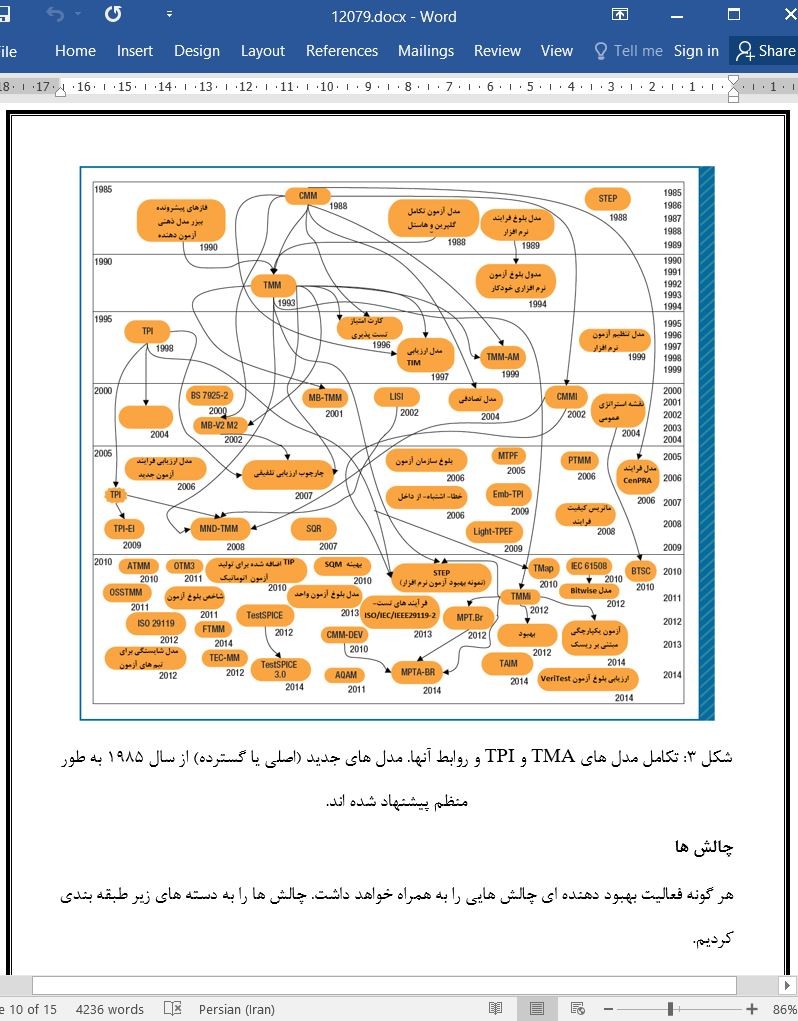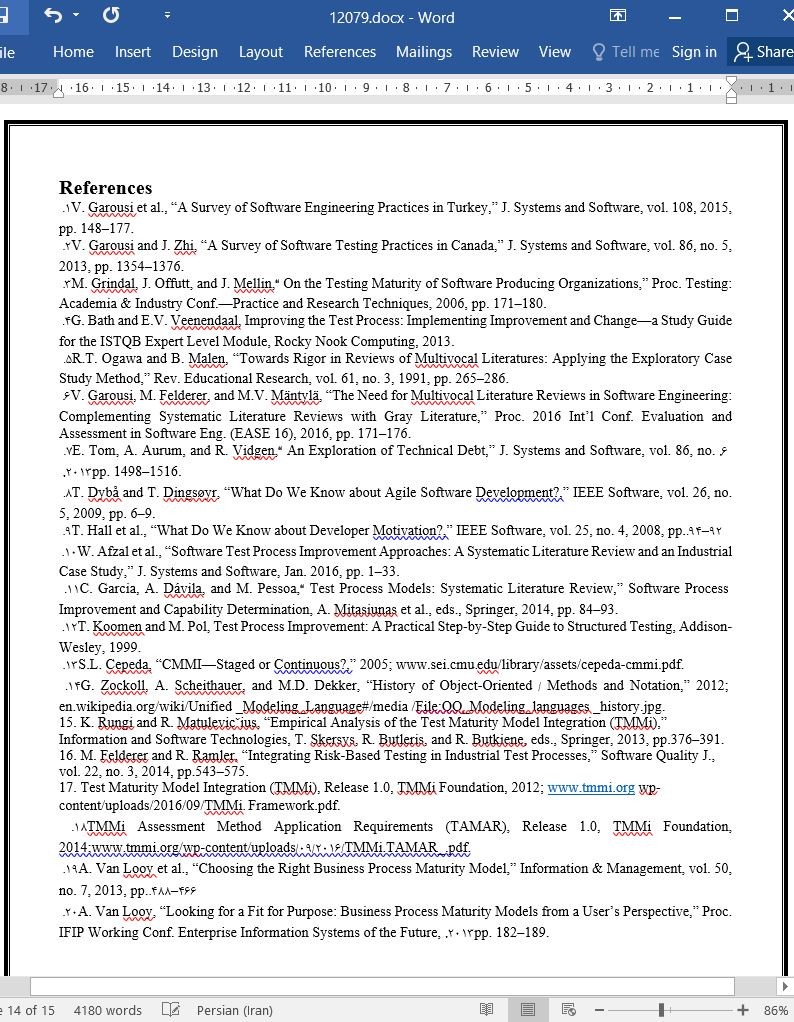
آنچه در مورد بلوغ آزمون نرم افزار و بهبود فرآیند آزمون می دانیم
«بررسی منابع علمی و منابع خاکستری متخصصان، 58 مدل بلوغ آزمون را شناسایی کرد و همچنین منابع بسیاری با درجات مختلفی از شواهد تجربی را مشخص نمود. با استفاده از این دانش، محققان و متخصصین قادر به ارزیابی و بهبود بلوغ فرایند آزمون هستند.»
بهره وری و تاثیر شیوه های آزمون نرم افزاری در بین شرکت ها و تیم های نرم افزاری متفاوت است. برخی شرکت ها، توسعه نرم افزار و آزمون کارآمد و موثری انجام می دهند که نرم افزار با کیفیتی تولید می کند. متاسفانه، با این حال، شیوه های آزمون بسیاری از شرکت ها از بلوغ بسیار دور هستند و شیوه های آزمون را معمولا به صورت ad hoc انجام می دهند. چنین شیوه های نابالغی منجر به نتیجه منفی می شوند- به عنوان مثال، آزمونی که تمامی عیوب را شناسایی نکند یا آزمونی که هزینه های متحمل شده و تفاوت هزینه ی واقعی و هزینه ی پیش بینی شده در برنامه را مشخص ننماید.
به منظور تعیین بهره وری، اثرگذاری و کیفیت شیوه های آزمون، شرکت ها و تیم های نرم افزاری اغلب ارزیابی بلوغ آزمون (TMA) را اجرا می کنند. مهندسین و مدیران آزمون به منظور پیگیری، اغلب بهبود فرآیند آزمون (TPI) را اجرا می کنند. محققان و صنعتگران، به منظور انجام TMA و TPI به طور سیستماتیک، رویکردها و چارچوب های مختلفی پیشنهاد کرده اند، مانند روش های توصیف شده در کتاب تازه چاپ شده بهبود فرآیند آزمون: تغییرات و بهبود اجرا. این کتاب اساسی برای گواهینامه سطح پیشرفته بورد واجد شرایط آزمون نرم افزاری بین المللی (ISTQB) بر TPI را ارائه می دهد.
A review of the scientific literature and practitioners’ gray literature identified 58 test maturity models and many sources with varying degrees of empirical evidence. Using this knowledge, researchers and practitioners should be able to assess and improve test process maturity
THE EFFICIENCY AND effectiveness of software testing practices vary among companies and software teams. Some companies conduct efficient, effective software development and testing that produce high-quality software. Unfortunately, however, many companies’ testing practices are far from mature and are usually conducted in an ad hoc fashion.1–3 Such immature practices lead to negative outcomes—for example, testing that doesn’t detect all the defects or that incurs cost and schedule overruns.
To determine the efficiency, effectiveness, and quality of testing practices, companies and software teams often perform test maturity assessment (TMA).4 As a follow-up, test engineers and managers often perform test process improvement (TPI). To conduct TMA and TPI systematically, researchers and practitioners have proposed various approaches and frameworks, such as the approaches described in the recent book Improving the Test Process: Implementing Improvement and Change. 4 This book forms the basis for the International Software Testing Qualifications Board (ISTQB) expert-level certification on TPI.
فرآیند عمومی TMA و TPI
مراحل بررسی
مشارکت محققان و پژوهشگران
مدل های بلوغ آزمون
درایورها
چالش ها
مزایا
مطالعه موردی صنعتی
منابع
A General Process for TMA and TPI
The Review Procedure
Researcher and Practitioner Involvement
The Test Maturity Models
Drivers
Challenges
Benefits
An Industrial Case Study
References
- اصل مقاله انگلیسی با فرمت ورد (word) با قابلیت ویرایش
- ترجمه فارسی مقاله با فرمت ورد (word) با قابلیت ویرایش، بدون آرم سایت ای ترجمه
- ترجمه فارسی مقاله با فرمت pdf، بدون آرم سایت ای ترجمه



